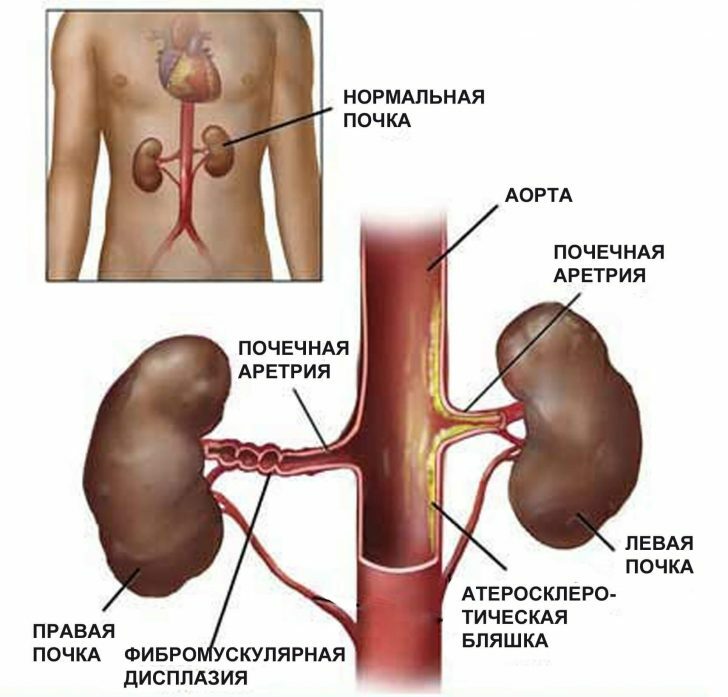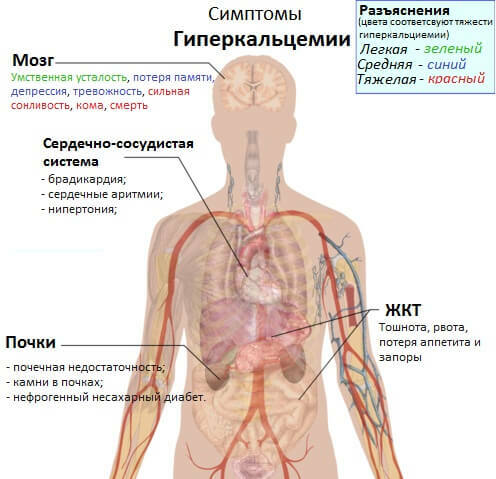Anemia of a chronic disease: what is it, causes, symptoms, treatment
Content
- What is Chronic Disease Anemia?
- Signs and symptoms
- Causes
- Affected populations
- Similar disorders
- Diagnostics
- Standard treatments
- Exploratory therapy
- Prognosis of anemia of chronic disease
What is Chronic Disease Anemia?
Chronic disease anemiaalso called anemic chronic inflammation, is a condition that can be associated with many different diseases occurring in the human body, including chronic diseases such as cancer, certain infectious processes, autoimmune and inflammatory diseases such how rheumatoid arthritis or lupus.
Anemia characterized by low levels of circulating red blood cells or hemoglobin, the portion of red blood cells that carries oxygen. Anemia of chronic disease is usually a mild to moderate condition. In mild cases, anemia does not show any symptoms or only causes fatigue, pale skin, and dizziness. The main mechanisms that cause anemia of chronic disease are complex and not fully understood by medicine.
Signs and symptoms

Anemia of chronic disease varies in severity from one person to the next. In most cases, anemia is usually mild to moderate. Affected people may develop a variety of symptoms such as:
- fatigue;
- pallor of the skin;
- dizziness;
- labored breathing (dyspnea);
- heart palpitations (tachycardia);
- irritability;
- chest pain, etc. signs.
Anyone who has a comparable degree of anemia can experience these symptoms. In most cases, symptoms associated with the underlying disease usually have precedence over those of mild to moderate anemia.
In rare cases, the anemia of a chronic illness can be severe and cause more serious complications.
Causes

The cause of anemia from chronic disease can vary. Usually several processes are involved at the same time. Anemia can be caused by a slight reduction in the normal survival of red blood cells. In addition, the production of red blood cells (erythropoiesis) or erythropoietin (a hormone that stimulates the production of red blood cells) may be impaired. Red blood cells carry oxygen to the body. The exact cause of the anemia of a chronic disease may depend on the underlying condition in the patient's body. For example, with cancer, cancer cells can secrete certain substances that damage or destroy immature red blood cells. In some cases, cancer cells or infectious diseases can invade the bone marrow, a soft, spongy material found in long bones where blood cells are formed.
Researchers have also learned that people with anemic chronic disease have imbalance in the distribution of iron in the body and, as a result, cannot effectively use iron to create new blood cells, despite sufficient or increased iron content in the tissues. Iron is a critical mineral found in all cells of the body and is essential for the normal functioning and growth of the body.
Read also:Pancytopenia
Iron found in many types of food, including red meat, poultry, eggs, and vegetables. Iron levels must remain within a certain range in the body, otherwise they can cause anemia (due to low functional iron levels) or damage to affected organs (due to abnormally high levels of iron in certain tissues).
Iron is needed for the production of hemoglobin, the part of the red blood cell that carries oxygen. A key finding in chronic anemia is increased absorption and retention of iron in certain cells, which leads to a decrease in the amount of functional iron available for production hemoglobin. A lack of functional iron inhibits the development of hemoglobin, which in turn reduces the amount of oxygen delivered throughout the body.

Researchers believe that the immune system, which is constantly active in people with chronic diseases, produces substances that affect the production, storage and transport of iron in the body. Cells in the immune system produce cytokines, specialized proteins that stimulate or inhibit the function of other cells in the immune system.
Hepcidin, a hormone produced in the liver that helps regulate the metabolism and transport of iron in the body, plays a significant role in the anemia of chronic disease. Researchers believe a specific cytokine known as interleukin-6 (IL-6) stimulates hepcidin production in most cases, although hepcidin can also be produced in response to inflammation in ways that do not include IL-6. Excess hepcidin causes too much iron to be trapped inside the cells, which reduces the amount of iron available for hemoglobin production, leading to anemia.
Most researchers believe that hepcidin is a key factor in the development of anemia in chronic diseases.
Affected populations
Anemia of chronic disease affects men and women in equal proportions. People of any age who have a chronic, inflammatory condition can potentially have this disorder. The exact incidence of anemia of chronic disease is unknown, and some researchers believe that it is underestimated or often goes unrecognized. Anemia of chronic disease is believed to be the second most common cause anemia after iron deficiency anemia.
Similar disorders
Iron-deficiency anemia is a common condition in which people have insufficient iron levels in their bodies and cannot produce enough red blood cells to carry oxygen through organism. Iron deficiency anemia can cause a variety of symptoms, including fatigue, weakness, pale skin, shortness of breath, headaches, and dizziness.
Read also:Thrombocytopenia
Additional symptoms that people with iron deficiency anemia may experience include cold hands or legs, irritability, irregular heartbeat, and increased susceptibility to developing infections. Iron deficiency anemia is caused by insufficient levels of iron in the body, which can be due to blood loss, a diet low in iron, or an inability of the gastrointestinal tract to absorb enough gland.
Anemia observed in chronic kidney diseaseis usually caused by a deficiency of erythropoietin as a result of kidney cell damage. However, some patients with kidney disease also develop inflammation or infections, and the anemia of the chronic disease may be part of their anemia.
Diagnostics
The diagnosis of anemia of chronic disease is made by identifying characteristic symptoms, a detailed history of the patient, careful clinical evaluation, and various specialized tests. These tests can measure levels of certain substances in the body, including hemoglobin levels, iron levels in serum, total iron binding capacity, total red blood cell count, or normal or elevated levels ferritin in the blood. Ferritin Is a protein that binds to iron and is used as an indicator of the body's iron stores in blood plasma. Another assay that can be done measures transferrin saturation. Transferrin Is a protein that is involved in the transport of iron from the intestine to the bloodstream.
Standard treatments
Treating anemia chronic disease is directed at the underlying disease. If treatment of the underlying disorder is successful, the anemia usually improves or goes away completely without direct treatment.
Efforts to treat anemia by correcting iron imbalances in the body with treatments such as oral iron supplements or vitamins have generally been ineffective.
In fact, such efforts can have a negative impact on overall health. For example, taking iron supplements is controversial because some diseases, such as cancer, use iron to grow and spread cells, and some infections use iron as nutrition.
More research is needed to understand the complex mechanisms that ultimately lead to anemia of chronic diseases, and what role, if any, do traditional treatments for anemia and iron imbalance play in treating patients of people.
Exploratory therapy
In rare cases associated with severe anemia, it may be necessary blood transfusion or treatment with drugs that stimulate the production of erythropoietin (a hormone that stimulates the production of red blood cells).
However, in some studies, people using this treatment performed worse than those who did not take these drugs. More research is needed to determine the long-term safety and effectiveness of such therapy for treating people with anemic chronic disease.
Read also:High levels of potassium in the blood (hyperkalemia)
Prognosis of anemia of chronic disease
The outcome of this disease will largely depend on the severity of the disease, its underlying cause, and how well the patient responds to treatment.
Usually, when anemia occurs with an underlying medical condition, it is associated with:
- less favorable outcome of the underlying condition;
- long hospital stay;
- poor quality of life;
- cognitive (brain) impairment;
- heart failure;
- an increase in the incidence of other infectious pathologies.
This can lead to increased symptoms of the underlying condition and even accelerate the progression of the disease.
In cases where anemia is corrected to specific levels, quality of life and energy levels can be improved.
- Cancer.
In cancer patients, anemia is associated with poor survival, so the relative risk of death in cancer patients with anemia is 65%. It is also associated with increased fatigue, which can lead to decreased ability to work and perform daily activities and contribute to social isolation.
- Chronic kidney disease.
Patients with chronic kidney disease who have anemia suffer from:
- a decrease in the quality of life;
- cognitive impairment;
- sleep disturbance;
- the progression of the disease;
- an increase in cardiovascular disease;
- decreased exercise tolerance, angina pectoris and heart failure;
- weaker organ function after kidney transplant surgery;
- increased mortality.
- HIV AIDS.
Anemia in HIV Patients /AIDSohm is associated with:
- more rapid development of the disease from HIV to AIDS;
- reduced survival, so that the risk of death can increase up to 70%;
- increased need for frequent blood transfusions;
- increased fatigue;
- poor quality of life.
- Cardiovascular diseases.
In patients with heart failure, anemia is associated with a decrease in quality of life, which is predictive factor for patients requiring readmission, and is associated with an increase mortality. In patients who have undergone myocardial infarction (heart attack), the presence of anemia is a risk factor for death. Similarly, in patients undergoing coronary artery bypass grafting, anemia is associated with complications.
- Aged people.
In older people, anemia is associated with a more rapid decline in physical function. It's connected with:
- an increased risk of falls;
- weakness, muscle wasting and immobility;
- cardiovascular and neurological disorders;
- depression and dementia;
- hospitalization;
- dependence on long-term care or institutionalization;
- increased mortality.



